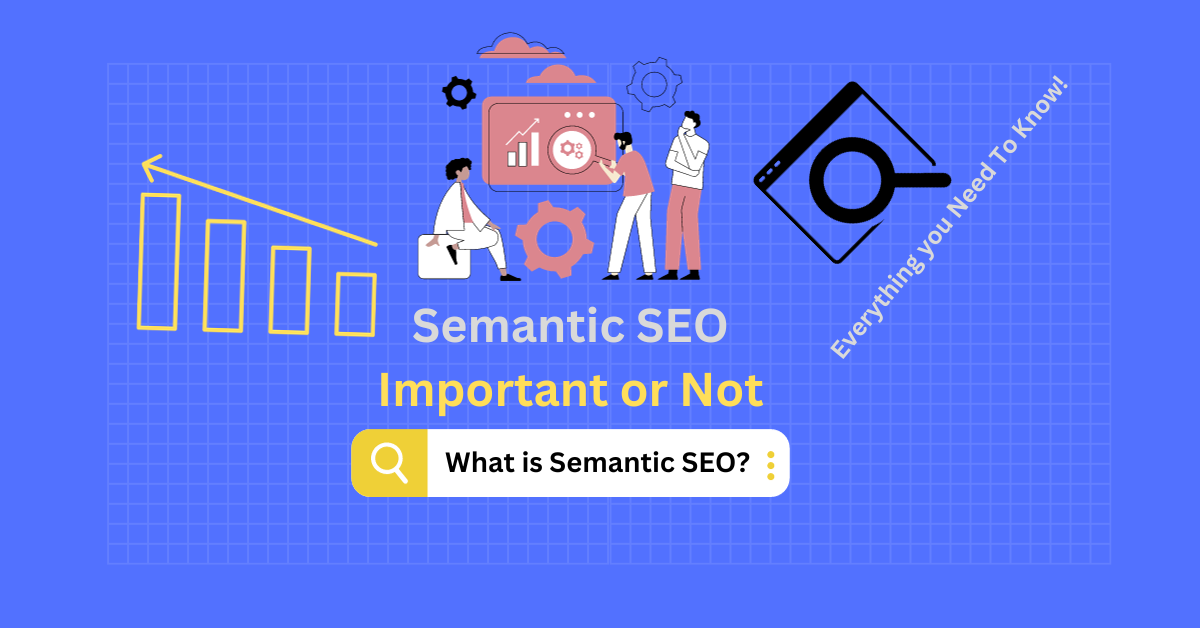No products in the cart.
SEO
Unlocking the Power of Semantic SEO: How to Optimize Your Content for Better Search Engine Rankings
Welcome to the exciting world of Semantic SEO, where unlocking the power of search engine optimization is more than just keywords and backlinks. Understanding how search engines interpret content in this digital age is crucial for improving your online visibility and attracting the right audience. Join us to explore Semantic SEO and discover effective strategies to optimize your content for better search engine rankings. Let’s dive in!
Understanding Semantic SEO: What it is and Why it Matters
Semantic SEO goes beyond traditional keyword optimization by focusing on the meaning and intent behind search queries. It’s about understanding the context of a user’s search to deliver more relevant results. Instead of just matching keywords, Semantic SEO aims to match the user’s query with content that best fits their needs.
By incorporating semantic elements into your content, you can provide search engines with valuable context about your website. Making it easier for them to understand and index your pages accurately. This leads to better visibility in search results and increased organic traffic.
In today’s digital landscape, where competition for online visibility is fierce, mastering Semantic SEO is essential for staying ahead. By embracing semantic strategies, you can enhance your site’s user experience while boosting your search engine rankings. Let’s explore how to leverage Semantic SEO to elevate your online presence!
The Evolution of Search Engines and Semantic Search
The world of search engines has come a long way from simple keyword matching to the more sophisticated semantic search we see today. In the past, search results were based primarily on exact word matches, leading to sometimes irrelevant or spammy content ranking high. However, with advancements in technology and algorithms, search engines now focus on understanding user intent and context.
Semantic search aims to provide more accurate results by analyzing not just keywords but also the meaning behind them. This evolution has revolutionized how we approach SEO. Shifting the focus toward creating high-quality, relevant content that answers users’ questions effectively.
By incorporating semantic SEO strategies into your content creation process, you can increase visibility and reach a more targeted audience. As search engines refine their algorithms and prioritize semantic relevance, staying updated on these changes is crucial for maintaining a competitive edge in online visibility.
Critical Elements of Semantic SEO: Content, Context, and Connection
When it comes to Semantic SEO, understanding the key elements is crucial for optimizing your content effectively.
Content plays a significant role in semantic search as search engines aim to deliver results that match user intent. Creating high-quality and relevant content increases your chances of ranking higher in search engine results pages.
Context is another essential element of Semantic SEO. Search engines now consider the context surrounding keywords to provide more accurate results. Incorporating related terms and topics within your content helps search engines better understand the meaning.
Connection refers to how different pieces of content on your website are linked together. Creating a coherent internal linking structure helps search engines navigate your site more efficiently and improves user experience.
By focusing on these critical elements – content, context, and connection. You can enhance your Semantic SEO strategy and improve your search engine rankings.
Strategies for Implementing Semantic SEO in Your Content
When it comes to implementing Semantic SEO in your content, you can use several strategies to boost your search engine rankings.
Focus on creating high-quality, relevant content that aligns with user intent. This means understanding the context behind the keywords and providing valuable information that answers users’ queries effectively.
Optimize your website structure by logically organizing your content and using internal linking to establish connections between related topics. This helps search engines better understand the relationships between different pieces of content on your site.
Furthermore, leverage schema markup to provide search engines with additional context about your content. By including structured data markup on your website, you can enhance the visibility of your pages in search results and improve their chances of being featured as rich snippets.
Regularly monitor and analyze the performance of your semantic SEO efforts using tools like Google Analytics and Search Console. Keep track of critical metrics such as organic traffic, keyword rankings, and click-through rates to identify areas for improvement and refine your strategy over time.
Common Mistakes to Avoid When Implementing Semantic SEO
When it comes to implementing Semantic SEO, common mistakes can hinder your efforts in achieving better search engine rankings. One mistake is over-optimizing content with keywords without considering the context and relevance to the user’s search intent. This can lead to a poor user experience and lower rankings.
Another mistake is that we need to pay more attention to the importance of structured data markup. You need to utilize schema markup to provide additional context to search engines to avoid missing out on opportunities for enhanced visibility in search results.
Furthermore, failing to create high-quality, engaging content that resonates with your target audience can negatively impact your SEO strategy. Content should focus on providing valuable information rather than just keyword stuffing.
Not optimizing for mobile devices can be a significant oversight. With more users accessing the internet via mobile devices, ensuring your website is mobile-friendly is crucial for user experience and search engine optimization success.
Future Trends in Semantic SEO and the Importance of Staying Ahead
As we look toward the future of SEO, it is evident that semantic search will continue to shape how content is discovered and ranked by search engines. Staying ahead of the curve in semantic SEO will be crucial for businesses looking to maintain a competitive edge in the digital landscape.
By understanding and implementing the critical elements of semantic SEO – focusing on creating high-quality content, establishing context, and building connections – businesses can optimize their online presence for better search engine rankings. Leveraging tools for semantic keyword research and learning from successful case studies can further enhance your strategy.
Avoiding common mistakes such as keyword stuffing or neglecting user intent will be essential in optimizing your content effectively. By staying informed about emerging trends in SEO and adapting your approach accordingly, you can position your brand for long-term success in an evolving digital environment.
Remember, mastering semantic SEO is not just about ranking higher on search engine results pages; it’s about providing valuable information to users in a way that resonates with them. Embrace the power of semantic SEO today to unlock new opportunities for growth and visibility online. Stay proactive, stay relevant, and stay ahead!

